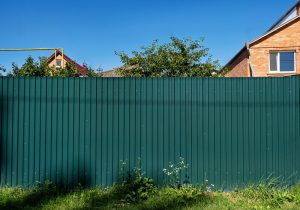What Are the First Steps to Take After Discovering Mold?
Discovering mold in your home or workplace can be a daunting experience. Mold is unsightly and poses significant health risks, including respiratory issues and allergic reactions. It can damage your property, weaken structures, and lead to costly repairs. Immediate action is crucial to mitigate these risks.
The first steps you take after discovering mold are critical to ensuring the problem is addressed effectively and efficiently. Here are the first steps you should take after discovering mold:
1. Identify the Source of Moisture
The first step in addressing mold is to identify and eliminate the source of moisture. Mold thrives in damp environments, so it’s crucial to determine where the moisture comes from. Check for leaks in roofs, walls, and plumbing or areas with high humidity. Fixing these issues is essential to prevent further mold growth. For professional assistance, consider PuroClean mold cleanup services to ensure a thorough and effective solution to your mold problems.
2. Assess the Extent of the Mold
Determine the extent of the mold contamination. Homeowners can sometimes handle small, localized mold patches, while larger infestations or mold in hidden areas may require professional intervention. Consider the size of the affected area and the type of materials involved in your assessment.
3. Protect Yourself
When dealing with mold, it’s essential to protect yourself. Wear protective gear such as gloves, masks, and eye protection to prevent direct contact with mold spores. Ensure proper ventilation in the affected area to reduce inhalation risks.
4. Contain the Area
Contain the affected area to prevent mold spores from spreading to other parts of the property. Close doors and windows, and use plastic sheeting to seal off the contaminated section. This step is critical if the mold is extensive or in high-traffic areas.
5. Remove and Dispose of Affected Materials
Clean the area with water and detergent or a commercial mold cleaner if the mold is limited to non-porous surfaces. Porous materials such as drywall, carpeting, and insulation that are heavily contaminated should be removed and properly disposed of, as they can retain mold spores and moisture.
6. Clean and Disinfect
After removing affected materials, thoroughly clean and disinfect the area. Use a solution of water, detergent, or a mold-specific cleaner to scrub surfaces. Follow up with a disinfectant to kill any remaining mold spores and prevent regrowth.
7. Dry the Area Completely
Ensure that the affected area is arid to prevent mold from returning. Use fans, dehumidifiers, and proper ventilation to speed up drying. Moisture control is critical to stopping mold growth, so it’s essential to eliminate any dampness.
8. Inspect and Address HVAC Systems
If mold contamination is extensive, it may spread to your HVAC system, which can circulate spores throughout your property. Have your HVAC system inspected and cleaned to ensure it does not contribute to mold growth and spread.
9. Consider Professional Help
Consider hiring professional mold remediation services for extensive mold infestations or if you need help handling the situation. Professionals in Orchard Park, NY, have the expertise, equipment, and protective gear to remove mold and prevent future growth safely.
10. Prevent Future Mold Growth
Finally, steps should be taken to prevent future mold growth. Maintain low indoor humidity levels, use exhaust fans in bathrooms and kitchens, fix leaks promptly, and ensure proper ventilation throughout your property. Regularly inspect areas prone to moisture and address any issues immediately to keep mold at bay.
Final Thoughts
Taking swift and effective action after discovering mold is essential to mitigate its impact and prevent further spread. You can address mold issues effectively by identifying the source of moisture, assessing the extent of contamination, protecting yourself, containing the area, removing affected materials, and thoroughly cleaning and drying the space. If the infestation is extensive or you are unsure how to proceed, seeking professional help is advisable. Implementing preventive measures will help you maintain a mold-free environment in the future.


